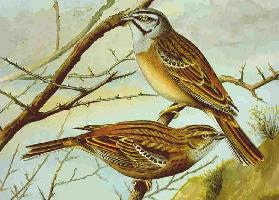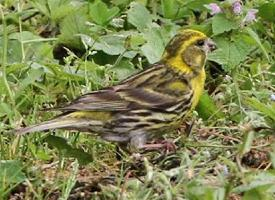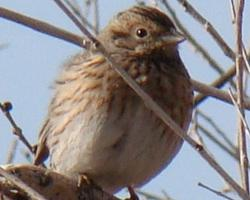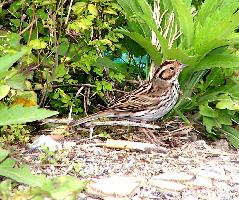
Description de l'animal
The Rock Bunting (Emberiza cia) is a small yet captivating passerine bird that belongs to the bunting family, Emberizidae. This species exhibits a blend of subtle beauty and rugged charm, mirroring the habitats it often frequents. Characterized by its distinctive plumage and melodious song, the Rock Bunting is a bird that embodies the spirit of the wild landscapes it inhabits.Adult Rock Buntings are relatively small birds, measuring about 15-17 cm in length, with a wingspan that ranges from 23 to 29.5 cm. They have a robust build, with a strong, conical bill that is adept at cracking seeds, which form a significant part of their diet. The plumage of the Rock Bunting is notably attractive and serves as a key identifier for the species. Males, in particular, boast a striking appearance during the breeding season with their heads patterned in black, white, and grey, and a bright, chestnut-brown band across their chest. This contrasts sharply with their otherwise greyish-brown back and pale underparts. Females and juveniles are less conspicuous, donning a more muted version of the male's plumage, with subtler patterns and a generally browner overall appearance.
Rock Buntings are primarily found across the mountainous regions of southern Europe, extending into the western parts of Asia. They prefer rocky landscapes, such as hillsides, cliff faces, and scrublands, where they are often seen hopping among stones and low vegetation in search of food. Their diet is predominantly seed-based, but during the breeding season, they will also consume insects to supplement their nutritional intake.
Breeding typically occurs from late spring to early summer. The Rock Bunting is a monogamous species, with pairs forming strong bonds during the breeding season. Nests are artfully constructed on the ground or in low bushes, camouflaged among rocks and vegetation. They are crafted from grass, twigs, and leaves, lined with finer materials for insulation. Females lay between 3 to 5 eggs, which they incubate for about two weeks. Both parents are involved in feeding the chicks, which fledge approximately two weeks after hatching.
The song of the Rock Bunting is a distinctive and pleasant element of its presence in the wild. Males sing a complex and variable melody from elevated perches to establish territories and attract mates. Their vocal performance is a rich tapestry of whistles, trills, and buzzes, adding to the auditory landscape of their rugged habitats.
Despite facing threats from habitat destruction and degradation, the Rock Bunting is currently listed as of Least Concern by the International Union for Conservation of Nature (IUCN), indicating a stable population across its range. Conservation efforts and protected areas play a crucial role in ensuring the species continues to thrive in its natural habitats.
In summary, the Rock Bunting is a bird of striking beauty and resilience, perfectly adapted to life in the rocky terrains it calls home. Its presence enriches the biodiversity of the regions it inhabits, making it a species of interest for both ornithologists and nature enthusiasts alike.
Animaux similaires
Nouvelles photos d'animaux
Top 10 des animaux
- Dolphin gull (Leucophaeus scoresbii)
- Diana monkey (Cercopithecus diana)
- Moustached guenon (Cercopithecus cephus)
- Galápagos tortoise (Geochelone nigra complex)
- Japanese macaque (Macaca fuscata)
- Stone loach (Barbatula barbatula)
- Russian tortoise (Testudo horsfieldii)
- Greek tortoise (Testudo graeca)
- Common flying dragon (Draco volans)
- Vendace (Coregonus albula)


